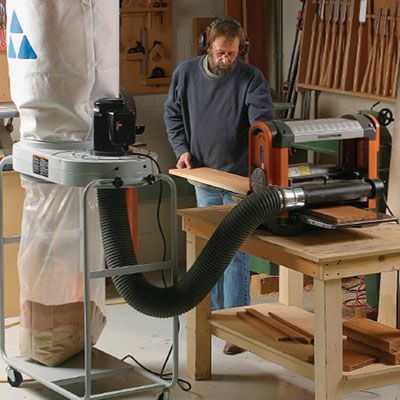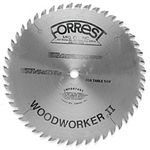Portable Dust Collectors
Affordable and mobile, 1 1/2 hp machines can do the job if you follow two simple rules
Synopsis: It isn’t necessary to spend mountains of cash for a dust-collection system that will connect simultaneously to every machine in your shop. You can get effective dust collection from a modest, 1 1/2 hp machine as long as you fit it with an effective filter and set it up correctly. Woodworker Michael Standish tested 10 moderate-sized dust collectors to determine how they perform in a typical shop environment. His conclusion? While they all look alike, there are key differences in performance.
Models tested include the Bridgewood BW-105A, Craftsman 21337, Delta 50-760, Delta 50-850, General 10-105, Grizzly G1028Z, JDS Dust-Force, Jet DC-1100A, Penn State Industries DC2V2, and Shop Fox W1685.
With enough money and electricity, it’s easy to get a dust collector strong enough to move mountains of chips through ducts connected to every machine in the shop. But even a modest dust collector, such as those tested for this article, can be a tremendous help provided you follow two rules: One, fit it with an effective filter; and two, don’t treat it like a true central dust-collection system with long runs of ductwork.
To be effective, portable dust collectors must do three things: move air fast enough to transport big chips, shavings, and dust; move enough air to capture all the waste that woodworking machinery generates; and trap even the finest dust particles.
Without a first-class filter, a dust collector becomes a dust-recirculating pump, spewing contaminated air throughout the shop. The most pernicious dust particles measure only 1 micron—a millionth of a meter—or less. When inhaled, they contribute to afflictions ranging from chronic respiratory problems to various cancers. Some of the units we tested come with a 1-micron filter as standard equipment, but others offer it only as an extra-cost accessory. There are also 1-micron aftermarket filters you can buy.
The 10 collectors tested are about the most powerful type available that run on normal 120v household current. They have a 1.5-hp motor driving an impeller to suck dust into the filter and the collection bags. They’re designed to handle the waste from a typical shop machine, but not from two machines at once. Some have a 6-in.-dia. intake port; others, a 5-in.-dia. port. These dust collectors look so much alike that you might think they came from the same factory. However, testing turned up some important differences. To fully appreciate those differences, you first need to understand the basics about moving air.
Dust Collection 101: A primer
Forcing air through a dust collector generates both static pressure and velocity pressure. Velocity pressure is produced by the moving air.
From Fine Woodworking #183
For the full article, download the PDF below:
Fine Woodworking Recommended Products

Shop Fox W1826

Forrest Woodworker II Blade

Ridgid R4331 Planer






















Log in or create an account to post a comment.
Sign up Log in